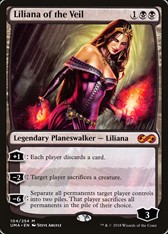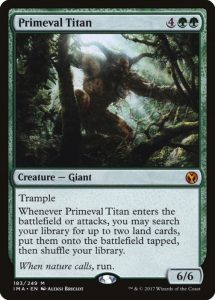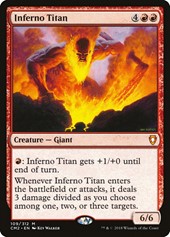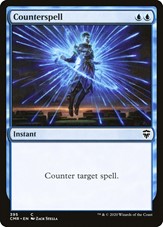There are countless Magic: the Gathering decks out there. Check any number of sites where people can upload their builds, such as TappedOut or DeckStats, and you’ll easily find thousands of decks for any format…with people adding new ones every single day.
Despite the unimaginably large number of MTG decks, though, most can be sorted into one of three categories: aggro, control, or midrange. We’ve already written guides for how to play control and how to play aggro, so we think it’s finally time to discuss tips for playing midrange in MTG.
What Does it Mean to Play Midrange in MTG?

A good starting point for this guide is to first define what midrange is, exactly. The thing is, it’s surprisingly tricky to define it.
It’s easiest to explain what midrange is by comparing it to the other two major archetypes, aggro and control. Aggro is a fast-paced, creature-heavy playstyle that focuses on overwhelming opponents with armies of powerful creatures.
Control, on the other hand, is centered on exerting influence over the battlefield, allowing only what you want to happen. It’s a slower archetype that tends to be reactionary, preventing other players from casting particular spells through things such as counter spells.
Midrange is kind of like a happy medium between aggro and control. A typical midrange deck will use a strategy similar to control in the early game and then flip to a more creature-heavy strategy later on in the game.
Read Next: Best MTG Sets for Green
Tips for Playing Midrange in MTG
Tip #1: It’s a marathon, not a race. Don’t play anything impactful in the 1-2 mana cost range.
A midrange deck is a good counter to both aggro and control decks…if you play it right. A huge part of that is balancing your playstyle very carefully, avoiding the use of any ultra-impactful cards that cost 1-2 mana.
If you use too many impactful cards for that cost, you’ll find yourself playing aggro rather than midrange. Remember, aggro plays heavy hitters to win the game quickly in that easily achievable 1-2 mana cost range.
At that point in the game, you should instead be using cards that provide destruction, ramp, or interaction. Focus on destroying creatures, forcing players to discard, and quickly building up your mana base. This is to shut down anything in the early game and prepare you for the next phase of your plan…
Tip #2: After a brief introductory period, drop your bombs. Put your impactful cards in the 4-6 mana cost range.

The whole reason you spent all the time in step one building a large mana base is so you could get to this phase: dropping your bombs. Most midrange decks put their most impactful, powerful cards in the 4-6 mana cost range.
At this point, you’ll have likely defused the aggro decks at the table, and now you’ll need to deal with those slow-burning control decks. That’s why you start whipping out some beefy creatures and spells at this phase.
You’ll have outlasted the fast decks, dampening their fire, and flared up before the spark of slower moving decks could catch on. It’s kind of like threading the needle.
Tip #3: Build a deck that can roll with the punches. Versatility is key.
A good midrange deck doesn’t just depend on competent play – it depends on building it solidly. Of course, how you build your deck will depend on your meta, but let’s take a general look at midrange deck-building considerations.
Midrange decks need to be more versatile than aggro or control ones. This is because they need to be able to address both of those playstyles.
Because of this, you have to have enough answers to a variety of problems. Consider having low-cost disruption spells so you can shut down those fast-moving aggro decks. Think about having plenty of ramp so you can get your bomb cards from the previous step out ASAP to put a pin in those control decks before they can start their endgame plans.
It’s a tricky archetype to build and may take you time and practice. Don’t be too hard on yourself if it takes you trial and error before you build a deck that performs consistently.
Need some tips on deck-building? You may not be building a Commander deck specifically, but you can still read our guide on how to build a Commander/EDH deck for $20 or less for some deck-building advice.
Tip #4: Choose your colors carefully.

It’s no secret that different colors in MTG play, well, differently. They each have their own strengths and weaknesses historically. As a result, some colors are better for the midrange playstyle.
For example, consider how midrange often incorporates efficient creatures in the mid- to late game. Such efficient creature cards are heavily concentrated in green, which is why green is naturally a good color to base your midrange deck around.
Aside from creatures, green also has ramp. Building up your mana base as quickly as possible will be important, so this makes green an even more logical choice.
We’re not saying your deck needs to be as green as a well-watered lawn in the midst of the summer. There are benefits to other colors, too.
Black and red are also good options for midrange decks. Black has a lot of disruption and interaction with things like discard and kill spells, while red’s abundance of burn and destruction cards makes it a viable candidate for the early game.
Tip #5: Planeswalkers are your friends.
It’s never a bad idea to include some planeswalkers in your midrange deck. There’s at least one compelling reason to do so: control decks have a really hard time dealing with them.
For one thing, the best way to handle a planeswalker is to counter it when it comes out. If for some reason a control deck is unable to do this, they must find a way to reduce that planeswalker’s loyalty counters to zero by smacking it with creatures…which control decks usually lack.
Control decks may have other methods of removal, but we can almost guarantee the vast majority of those will be targeted at creatures. Provided you can safely get your planeswalker on the battlefield, there’s a good chance it will be able to stay there if you’re playing against a control deck.
Midrange FAQs
How do you beat midrange in MTG?

What makes midrange so popular is that it is an excellent counter to both control and aggro. So what the heck can you do against a midrange deck?
Here’s where it gets weird…some of the best ways to handle a midrange deck are to go even harder into aggro or control. Yes, you read that right: you can beat a midrange deck with more aggro or more control.
It sounds stupid, but when you think about it, it makes sense. Aggro decks are designed to be fast-moving, while midrange decks aim to take their biggest actions later. Thus, if you can get your hard hitters out before a midrange deck has the time to set up, you can win.
With a heavy control deck, your aim is to be able to prevent a midrange one from taking root at all. Stop it at all turns if possible, and you’ll see it thwarted. Milling is a popular strategy in this regard, because it will force that annoying midrange deck to get rid of their cards.
Magic: the Gathering is a strange game. A lot is left up to chance and who draws what they need when they need it. Chance aside, there are a number of other factors that can determine who will win, such as skill and metas at the time of playing or within your specific playgroup.
Basically, MTG is like a massive game of rock, paper, scissors in which everything can beat everything. There is generally no deck guaranteed to win every time. You can only stack the odds in your favor and play the best you can.
What is Tempo in MTG?
Tempo is important for all types of decks in Magic: the Gathering, but it’s especially important for midrange. Because of this, let’s take a moment to answer a common question people have about it: what is tempo in MTG?
In short, tempo is the speed at which your deck plays its most powerful cards. Another way to look at it is how quickly you’re able to outpace your opponents.
Basically, tempo means you’re playing as much value as you can during your turn while disrupting the enemy’s value. This tends to consist of playing temporary removal cards, such as bounces, which set your opponents back for now, buying you much-needed time to win.
There are also decks that are called tempo decks. A tempo deck specializes in disrupting opponents and causing damage at the same time. Many tempo decks are actually midrange, so it’s worth mentioning them here.
Wrap Up
Magic: the Gathering is a complicated game. If you think you’ve played a complicated card game before, you’ve seen nothing until you’ve been in a long standoff with a few other Magic players, each waiting for someone to make the first risky move.
Even when you play with the same decks over and over again, it can feel totally different every time. The best thing you can do is find a general strategy that works for you and learn it, inside and out.
Midrange is that strategy for many people. Because it’s a good balance between fiery aggro and dominating control, it can be appealing to experienced players.
Let us know what your favorite archetype is with a comment below. Likewise, you can let us know if you have any MTG questions for us to answer.
